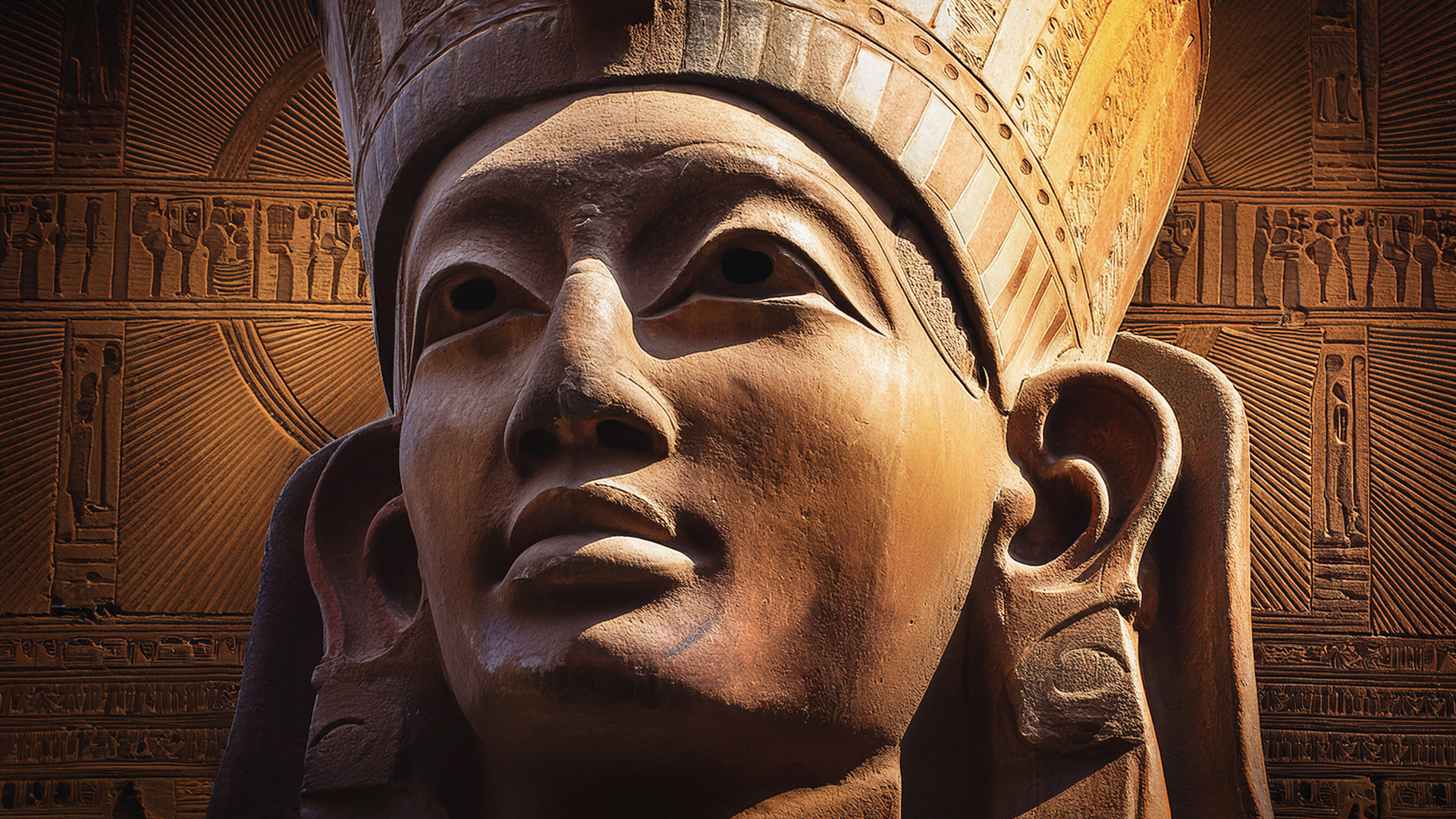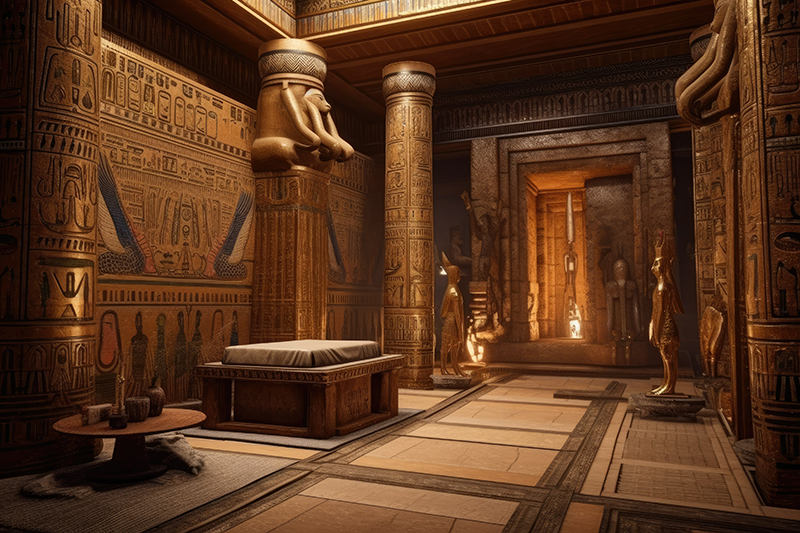

From Ancient Sleep Temples to Modern Hypnosis: A 4,000-Year Journey
Ever wondered where hypnosis really came from?
Most people think of hypnosis as some Victorian parlour trick or a stage show gimmick. But the truth? It's been around for over 4,000 years, and its story is absolutely fascinating.
From ancient Egyptian temples where people went to have healing dreams, to modern therapy rooms where it helps people overcome fears and break bad habits—hypnosis has quite the tale to tell. Let's take a journey through time and meet the remarkable people who shaped this incredible practice.
🏛️ Where It All Began: Ancient Egyptian Sleep Temples
Imhotep: The Original Hypnotherapist (Yes, Really!)
Forget Hollywood's mummy villain—the real Imhotep was actually a genius. We're talking about a man who was an architect, physician, and high priest all rolled into one. Around 2,600 BCE, this remarkable Egyptian was using techniques that look surprisingly similar to modern hypnosis.
Picture this: Imhotep would use rhythmic chanting, guided visualizations, and help people enter trance-like states to promote healing. Sound familiar? That's basically what hypnotherapists do today, just with fewer hieroglyphics!
The Magic of Sleep Temples
Imagine you're living in ancient Egypt, and you're dealing with chronic pain or anxiety that just won't go away. Where do you go? To the Sleep Temples in Memphis or on Philae Island along the Nile River.
These weren't your average medical clinics. When you arrived, priests and priestesses would welcome you with soothing music, aromatic oils, and gentle chanting. The whole atmosphere was designed to help you relax and open your mind.
Then came the main event: you'd be guided into a deep, hypnotic sleep. During this special state, you'd have vivid dreams that were believed to hold the key to your healing. When you woke up, the temple priests would help you understand what your dreams meant and how they could guide your recovery.
The really cool part? These temples were so successful that people traveled from all over the ancient world to visit them. They combined meditation, prayer, purifying baths, and what we'd now recognize as hypnotic suggestion—all working together to help people heal both physically and emotionally.

The Greeks and Romans Catch On

The ancient Greeks weren't about to miss out on a good thing. They created their own version called Asclepieions—healing temples dedicated to Asclepius, the god of medicine. Patients would undergo "incubation," sleeping in sacred chambers (often with non-venomous snakes around, because apparently that was relaxing to them!).
One famous story tells of a battle-weary soldier who couldn't shake his chronic pain. During his healing sleep at an Asclepieion, he dreamed that Asclepius himself performed surgery on him. When he woke up? Pain gone. Whether it was divine intervention or the power of suggestion, it worked!
The Romans borrowed these ideas too, especially invoking Hypnos, the god of sleep. Roman generals dealing with what we'd now call PTSD would participate in elaborate rituals involving chants and symbolic objects to achieve calming, trance-like states. It was their version of therapy, and it helped many soldiers cope with the trauma of warfare.

Hypnos, God of Sleep - He lived in a cave in the Underworld where the river of forgetfulness flowed, surrounded by sleep-inducing poppies.
🎩 The Birth of Modern Hypnosis: Meet the Pioneers
Franz Mesmer (1734-1815): The Showman Who Started It All
Let's talk about Dr. Franz Anton Mesmer, an Austrian physician who was equal parts scientist and showman. In the 1770s, Mesmer claimed he'd discovered "animal magnetism"—an invisible force flowing through all living things that could be manipulated to heal people.
His methods were theatrical, to say the least. Imagine a dimly lit Parisian salon with velvet curtains, large mirrors, and a central tub filled with "magnetized" water and iron filings. Patients would sit around this "baquet," holding metal rods and each other's hands, while Mesmer—dressed in flowing robes—would dramatically wave his hands and iron rods over them.
Did it work? Well, yes and no. In 1784, King Louis XVI got suspicious and sent in a dream team to investigate: Benjamin Franklin, chemist Antoine Lavoisier, and Dr. Joseph-Ignace Guillotin (yes, that Guillotin). Their conclusion? The effects were real, but they came from the power of suggestion and imagination, not any magical magnetic force.
Here's the thing though: even after being debunked, Mesmer's popularity didn't fade. Why? Because people were getting results. He'd accidentally stumbled onto something real—the power of the mind to heal itself through suggestion. We just call it hypnosis now instead of "animal magnetism."

James Braid (1795-1860): The Man Who Named It
Fast forward to 1841 Scotland. James Braid, a surgeon, went to a mesmerism demonstration fully expecting to expose it as fraud. But something unexpected happened—he actually got intrigued.
Braid went home and started experimenting on himself. He'd stare at a candle flame until his eyelids grew heavy and he'd slip into a trance. The revelation? You didn't need magnets or mysterious forces—just focused attention!
He coined the term "hypnosis" from the Greek word "hypnos" (sleep), though he later regretted the name because hypnosis isn't actually sleep at all. It's more like super-focused attention. But the name stuck, and Braid had successfully moved hypnosis from mystical mumbo-jumbo into the realm of science.
Ambroise-Auguste Liébeault (1823-1904) & Hippolyte Bernheim (1840-1919): The Dynamic Duo
Here's a heartwarming story: In 1866, Dr. Liébeault set up practice in a small French village and offered hypnosis treatments completely free to poor villagers. He genuinely believed in its power to help people.
One of his patients was a farmer suffering from chronic pain that nothing else could touch. Using simple verbal suggestions during hypnosis, Liébeault helped the farmer find relief. Word spread fast.
Enter Hippolyte Bernheim, a respected but skeptical physician who came to observe. He arrived doubting, but left as a believer, famously saying, "I came as a skeptic, I left a believer." Together, they founded the Nancy School of Hypnosis, which attracted students from across Europe and shifted the focus from mystical forces to psychological suggestion.
Sigmund Freud (1856-1939): The Complicated Relationship
Yes, that Freud! Before he became famous for psychoanalysis and talking about your mother, Freud actually used hypnosis in his early practice. He studied with Jean-Martin Charcot and saw how hypnosis could help uncover repressed memories.
But Freud eventually moved away from hypnosis, preferring his "talking cure" and free association techniques. Still, his early work with hypnosis helped lay the groundwork for understanding the unconscious mind, which would influence hypnotherapy for generations to come.

Milton Erickson (1901-1980): The Game Changer
If there's one person who revolutionized modern hypnosis, it's Milton Erickson. And his story is incredible.
As a teenager, Erickson was struck by polio and left completely paralyzed. Doctors gave him little hope. But during his recovery, he made an amazing discovery: by vividly imagining physical movements, he could stimulate slight muscle responses. Over time, this mental practice helped him regain his physical abilities. Talk about the power of the mind!
This personal experience shaped his entire approach to hypnosis. Unlike the direct, authoritative methods of his predecessors, Erickson developed a gentle, permissive style. He used storytelling, metaphors, and indirect suggestions that bypassed conscious resistance and spoke directly to the unconscious mind.
Instead of commanding "You will stop smoking," Erickson might tell a story about a person who discovered they no longer needed cigarettes. His techniques were tailored to each individual, working with their natural learning processes rather than against them.
Erickson's influence is everywhere in modern hypnotherapy. His methods inspired Neuro-Linguistic Programming (NLP) and countless therapeutic approaches that focus on working with, not against, the client's natural patterns.

🏥 Hypnosis Gets Respectable
1955: British Medical Association Says "Yes!"
After rigorous studies, the British Medical Association officially endorsed hypnosis as a legitimate therapeutic tool. This was huge—it meant hypnosis was no longer fringe medicine but a recognized treatment for pain management, psychosomatic disorders, and as support for psychotherapy.
1958: America Follows Suit
The American Medical Association echoed the British endorsement, solidifying hypnosis's place in clinical practice. Suddenly, hypnosis wasn't just accepted—it was mainstream.
🌟 Hypnosis Today: More Relevant Than Ever
So where are we now? Hypnosis in the 21st century is thriving and more versatile than ever. It's used for:
- Pain Management: From dental work to surgery to chronic pain—hypnosis helps people manage discomfort without always relying on medication.
- Phobias and Anxiety: Fear of flying? Social anxiety? Hypnosis can help rewire those fear responses.
- Breaking Bad Habits: Smoking, overeating, nail-biting—hypnosis addresses the subconscious patterns driving these behaviors.
- Performance Enhancement: Athletes, public speakers, and performers use hypnosis to get "in the zone."
- Mental Health Support: As a complement to therapy, hypnosis helps with depression, PTSD, and stress management.
The NLP Connection
One of the most exciting modern developments is combining hypnosis with Neuro-Linguistic Programming (NLP). This powerful combination leverages NLP's focus on language patterns and cognitive restructuring alongside hypnosis's ability to access the subconscious mind.
Together, they're particularly effective for personal development, confidence building, and rapid behavioral change. It's like having the best of both worlds—the deep access of hypnosis with the practical techniques of NLP.

Modern hypnotherapists stand on the shoulders of giants—from Imhotep's ancient temples to Erickson's innovative storytelling. Today's practitioners blend evidence-based approaches with the wisdom of these pioneers, creating personalized treatments that respect each individual's unique mind.
And thanks to technology, hypnosis is more accessible than ever. Virtual sessions, apps, and self-guided programs mean you can explore the power of your mind from anywhere. Neuroscience continues to reveal the mechanisms behind hypnotic states, confirming what ancient Egyptians somehow knew 4,000 years ago: the mind has incredible power to heal and transform.
The Journey Continues
From ancient sleep temples along the Nile to modern therapy rooms and digital platforms, hypnosis has come a long way. But at its heart, it's always been about the same thing: helping people tap into their mind's natural ability to heal, change, and grow.
The pioneers we've met—Imhotep, Mesmer, Braid, Liébeault, Bernheim, Freud, and Erickson—each added their piece to the puzzle. They faced skepticism, conducted experiments, made mistakes, and ultimately advanced our understanding of the human mind.
Today, whether you're dealing with chronic pain, trying to break a bad habit, or simply want to perform at your best, hypnosis offers a time-tested, scientifically-backed way to harness your mind's potential. Not bad for a practice that started with people sleeping in temples surrounded by snakes, right?
The story of hypnosis reminds us that sometimes the most powerful tools for change aren't found in pills or procedures—they're already within us, waiting to be unlocked. And that's pretty amazing when you think about it.
The journey of discovery continues. From ancient sleep temples to modern science, the story of hypnosis reminds us that the human mind holds extraordinary potential. The ancient Egyptians were onto something remarkable—and we're still uncovering its secrets today.

